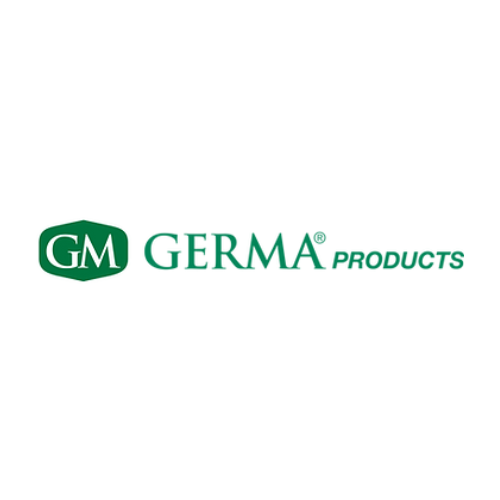
Entering the Walmart Marketplace: An In-Depth Seller's Guide
The Walmart Marketplace offers a promising avenue for e-commerce sellers, characterized by its vast customer base and a less competitive environment compared to other major online marketplaces. This guide is designed to provide a comprehensive walkthrough for sellers aiming to establish a presence on this platform. It covers the nuances of understanding Walmart's distinct offerings, the detailed application process, and strategies to optimize sales performance effectively.
What is the Walmart Marketplace?
Walmart Marketplace serves as a digital platform where third-party sellers can list and sell their products alongside those offered directly by Walmart. This arrangement not only diversifies the product offerings available to Walmart’s vast customer base but also allows sellers to leverage Walmart’s significant e-commerce traffic for increased visibility and potential sales.
The Growth of Walmart's E-Commerce Presence
Walmart has significantly ramped up its e-commerce operations to rival platforms like Amazon, resulting in a substantial increase in online traffic. Sellers on Walmart’s Marketplace benefit from the company's robust e-commerce infrastructure and broad consumer reach, which are critical in driving sales and enhancing brand visibility in a growing digital retail landscape.
Benefits of Selling on Walmart Marketplace
Vast Customer Reach
Walmart.com, with its millions of unique monthly visitors, presents an exceptional opportunity for marketplace sellers. The platform's sophisticated marketing tools and SEO capabilities help amplify product visibility, which is vital for driving traffic and increasing sales volumes.
Lower Competition Compared to Other Platforms
The Walmart Marketplace hosts fewer third-party sellers compared to other large platforms, providing a less crowded marketplace. This aspect is crucial for new entrants and smaller sellers as it reduces competition and increases the likelihood of consumer attention and conversion.
Credibility as a Walmart Seller
Aligning with a well-known and trusted retailer like Walmart can significantly enhance a seller's brand credibility. Walmart’s reputation for value and quality positively impacts the perceived reliability of third-party sellers on its platform.
Walmart’s Supportive Seller Ecosystem
Walmart supports its marketplace sellers with a variety of resources designed to facilitate success. These include comprehensive analytics, advertising programs, and a dedicated support structure to assist with any issues that arise, creating an environment conducive to seller growth and success.
Eligibility and Requirements for Becoming a Walmart Seller
Eligibility Criteria
To become a seller on Walmart’s Marketplace, applicants must possess a U.S. business tax ID and demonstrate a track record of e-commerce success. A compelling product catalog that aligns with Walmart’s quality expectations and standards is also necessary.
Necessary Documentation and Information
The application process requires thorough documentation, including a W9 or W8 form, and an EIN Verification Letter from the Department of Treasury. These documents confirm the legitimacy of the business and its operations within the United States.
The Application Process
Step-by-Step Guide to Application
- Registration: Initiate the process by registering for an account on the Walmart Seller Center.
- Account Setup: Complete your profile by providing detailed company information, tax details, shipping and return policies, and payment information.
- Verification: Walmart conducts a verification process to ensure all provided information meets their standards before granting marketplace access.
Tips for a Successful Application
- Accuracy is crucial: Ensure all information provided is accurate and up-to-date.
- Stand out: Highlight unique aspects of your products or business that would appeal to Walmart’s customer base.
Setting Up Your Walmart Seller Account
Dashboard Navigation
Learn to navigate the Seller Center dashboard effectively, as it will be the primary tool for managing listings, tracking sales, overseeing inventory, and communicating with customers.
Listing Your Products
Focus on creating detailed, high-quality product listings. Utilize professional photos and comprehensive descriptions, incorporating SEO-friendly keywords to maximize visibility within Walmart’s search algorithm.
Best Practices for Selling on Walmart Marketplace
Pricing Strategies
Implement competitive pricing strategies and consider using dynamic repricing tools to adapt to market changes, ensuring your pricing remains attractive yet profitable.
Inventory Management
Accurate inventory tracking is essential to prevent overselling or stockouts, which can negatively affect your seller performance rating and customer satisfaction.
Optimization of Product Listings
Optimize your product listings by focusing on SEO best practices specific to Walmart, including the strategic use of keywords and high-quality imagery to attract and convert customers.
Walmart’s Fulfillment Services
Overview of Walmart Fulfillment Services (WFS)
WFS provides a comprehensive solution for handling, storing, packaging, and shipping products. This service simplifies logistics for sellers and ensures a high-quality customer service experience.
How to Join WFS
To utilize WFS, apply through a separate process ensuring your products are eligible for the service, which can significantly streamline your operational logistics.
Marketing Your Products
Leveraging Walmart Sponsored Products
Utilize Walmart Sponsored Products to enhance product visibility. These ads are prominently displayed and can dramatically increase your sales by attracting more buyers.
Strategies for Increasing Visibility
Regularly engage in promotions and seasonal sales. Utilize analytical tools provided by Walmart to track customer behaviors and preferences, tailoring your marketing strategies for maximum effectiveness.
Common Challenges and Solutions
Navigating Walmart’s Seller Policies
Stay informed of Walmart’s policy updates and ensure your operations comply to avoid any potential infractions or penalties.
Dealing with Competition
Focus on developing unique selling propositions (USPs) and maintaining exceptional customer service to differentiate your offerings from competitors.
Managing Customer Service
Prioritize excellent customer service by responding quickly to inquiries and resolving issues promptly to maintain and enhance customer satisfaction.
Conclusion
Entering and succeeding in the Walmart Marketplace requires a well-thought-out strategy, a deep understanding of the platform, and an ongoing commitment to adapt and evolve with the marketplace dynamics. With the right approach, Walmart can provide a substantial platform for growth and profitability for many new products and wholesalers wanting to expand their ther business
Frequently Asked Questions
1. How long does it typically take to get approved as a seller on Walmart Marketplace? The approval process can vary, but typically it takes about 2 to 4 weeks. This timeframe can be influenced by the completeness and accuracy of the application submitted.
2. Are there any specific product categories that are restricted on Walmart Marketplace? Yes, Walmart restricts several product categories such as firearms, certain drugs, and alcohol. It's important to review the complete list of prohibited items on Walmart's official seller guidelines.
3. Can international sellers apply to sell on Walmart Marketplace?
Yes, international sellers can apply, but they must have a U.S. business tax ID and the ability to fulfill orders within the United States.
4. What are the fees associated with selling on Walmart Marketplace? Walmart does not charge setup or monthly fees. However, they do collect a referral fee on each sale, which varies by category, typically ranging from 6% to 20%.
5. How does Walmart handle shipping and fulfillment? Sellers can use Walmart Fulfillment Services (WFS) or opt to handle their own shipping and fulfillment. Using WFS can simplify logistics and potentially improve customer service.
6. Can sellers offer their products internationally on Walmart Marketplace?
Currently, Walmart Marketplace is primarily focused on sales within the United States. Sellers must be able to ship domestically even if they operate from an international location.
7. How does Walmart Marketplace handle returns and customer service?
Sellers on Walmart Marketplace are responsible for handling customer service and returns unless they use Walmart Fulfillment Services, which includes handling of returns.
8. What type of customer support does Walmart provide to sellers?
Walmart offers a dedicated support system for sellers, including an online help center, email support, and phone support to assist with various seller issues.
9. Is it possible to integrate existing e-commerce tools with Walmart Marketplace?
Yes, Walmart Marketplace allows integration with various e-commerce tools and platforms, helping sellers manage listings, inventory, and sales analytics more efficiently.
10. What are the best practices for maintaining a high seller rating on Walmart Marketplace?
Maintaining accurate product descriptions, competitive pricing, reliable fulfillment, and excellent customer service are key to keeping a high seller rating. Regularly monitoring performance metrics through Walmart's analytics tools can also help identify areas for improvement.




